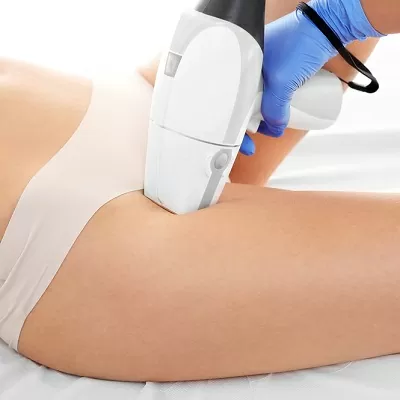How to Sleep Comfortably After Gynecomastia Surgery

Gynecomastia surgery is a common procedure designed to reduce excess fat and glandular tissue in the chest area, providing a more masculine contour. While the surgery offers life-changing results, the recovery process plays a crucial role in achieving optimal outcomes. One of the most significant factors in post-surgery recovery is how you sleep. Sleeping properly after gynecomastia surgery can help reduce swelling, ease discomfort, and accelerate healing. If you’re preparing for gynecomastia surgery in Dubai, this guide will offer valuable insights into achieving restful and comfortable sleep post-surgery.
Why Sleep Position Matters After Gynecomastia Surgery
Your sleeping position after gynecomastia surgery is critical for a smooth recovery. Incorrect positions can place undue pressure on the surgical area, potentially leading to complications such as increased swelling, discomfort, or even damage to the incisions. Doctors usually recommend sleeping in an elevated position or on your back to ensure that you protect your chest and promote healing.
Sleep on Your Back
Sleeping on your back is the best position following gynecomastia surgery. It allows the chest to heal without pressure on the surgical area, keeping the incisions intact and minimizing swelling. You can use pillows to ensure that your body stays aligned throughout the night.
Elevate Your Upper Body
Elevating your upper body helps minimize swelling by promoting better circulation. Use multiple pillows to raise your head and chest at a 30 to 45-degree angle. Some patients prefer using wedge pillows, which offer better support for maintaining this position.
Avoid Sleeping on Your Stomach or Side
While you may be tempted to return to your usual sleeping positions, it’s essential to avoid sleeping on your stomach or sides. Sleeping on your stomach can place significant pressure on the chest area, potentially delaying healing or causing discomfort. Side sleeping can also strain your chest and shoulders, making it harder for the surgical area to recover properly.
Preparing Your Sleep Environment
Creating a conducive environment for restful sleep is just as important as your sleeping position. Here’s how you can optimize your sleeping space for recovery after gynecomastia surgery in Dubai:
Choose Comfortable Bedding
Comfortable, soft bedding can make a significant difference in your post-surgery recovery. Ensure that your pillows offer adequate support and that your mattress is firm enough to provide stability for your back.
Wear Compression Garments
Compression garments help reduce swelling and ensure that the healing process stays on track. Many surgeons recommend wearing these garments even while sleeping for the first few weeks after surgery. Be sure to consult your surgeon to ensure you’re using the garment correctly.
Control the Room Temperature
Keeping your room at a cool, comfortable temperature can help you sleep better after surgery. A room that’s too warm may make you uncomfortable, while a cool environment can help reduce inflammation and aid in restful sleep.
Managing Pain and Discomfort for Better Sleep
It’s common to experience some level of discomfort following gynecomastia surgery. Managing this discomfort effectively is key to getting a good night’s sleep. Here are a few strategies to consider:
Follow Your Surgeon’s Pain Management Plan
Your surgeon will likely prescribe medications to help manage pain. Make sure to take them as directed, especially before bedtime, to avoid waking up in discomfort during the night.
Use Ice Packs
Ice packs can be beneficial in reducing swelling and easing discomfort. Applying an ice pack to the surgical area before sleep can help numb the area, making it easier to fall asleep. Be sure to place a cloth between the ice pack and your skin to prevent frostbite.
Elevate Your Legs
In addition to elevating your upper body, raising your legs slightly can promote better circulation and reduce swelling, allowing you to rest more comfortably.
Recovery Timeline and Sleep Adjustments
Understanding the timeline for your recovery can help you make necessary adjustments to your sleep routine. The healing process after gynecomastia surgery before and after results can vary, but most patients can expect the following phases:
First Week Post-Surgery
During the first week, it’s essential to sleep on your back with your upper body elevated. This position will help reduce swelling and avoid putting pressure on your chest area.
Second to Fourth Week
As you progress through your recovery, you may feel more comfortable, but it’s still important to avoid sleeping on your stomach or side. Continue to elevate your upper body and wear your compression garments.
After One Month
By the end of the first month, most patients can return to their normal sleeping positions. However, you should consult your surgeon to ensure that your incisions have healed properly before making any significant changes.
Gynecomastia Surgery Cost in Dubai
The gynecomastia surgery cost in Dubai can vary based on factors such as the surgeon’s expertise, clinic location, and the complexity of the procedure. On average, the cost ranges between AED 18,000 and AED 35,000. It’s essential to consult with your surgeon to get an accurate estimate based on your specific needs and the type of surgery you’re undergoing. Although cost is a significant factor, choosing an experienced surgeon should always be a priority for optimal results.
FAQs About Sleeping After Gynecomastia Surgery
1. How long do I need to sleep on my back after gynecomastia surgery?
Most surgeons recommend sleeping on your back for at least four weeks after surgery. This helps prevent pressure on the surgical area, ensuring that your incisions heal properly.
2. Can I sleep without my compression garment?
It’s important to wear your compression garment while sleeping during the initial recovery period. This garment helps minimize swelling and supports the healing tissues. Always follow your surgeon’s advice regarding when it’s safe to sleep without it.
3. How can I sleep more comfortably if I’m not used to sleeping on my back?
If you’re not accustomed to sleeping on your back, using pillows to prop yourself up and support your body can make the position more comfortable. Wedge pillows or body pillows can help keep you in place during the night.
4. When can I sleep on my side again?
Patients can usually start sleeping on their side after about a month, but it’s crucial to consult with your surgeon to ensure that your chest has healed adequately.
5. What if I accidentally roll onto my stomach while sleeping?
If you accidentally roll onto your stomach during sleep, try not to panic. While it’s not ideal, one instance is unlikely to cause serious harm. However, it’s a good idea to set up pillows around your body to prevent this from happening frequently.
Choosing the Right Surgeon for Gynecomastia Surgery
Selecting a highly qualified surgeon ensures that you receive the best care and achieve the desired results. The best plastic surgeons in Dubai have extensive experience in gynecomastia surgery and offer personalized treatment plans tailored to each patient’s needs. By choosing the right surgeon, you not only increase the likelihood of a smooth recovery but also ensure that your results will look natural and long-lasting.
In conclusion, sleeping comfortably after gynecomastia surgery requires some adjustments, but with the right strategies, you can significantly enhance your recovery experience. By following your surgeon’s guidelines, using supportive pillows, and wearing compression garments, you’ll be well on your way to a smooth and restful recovery.



